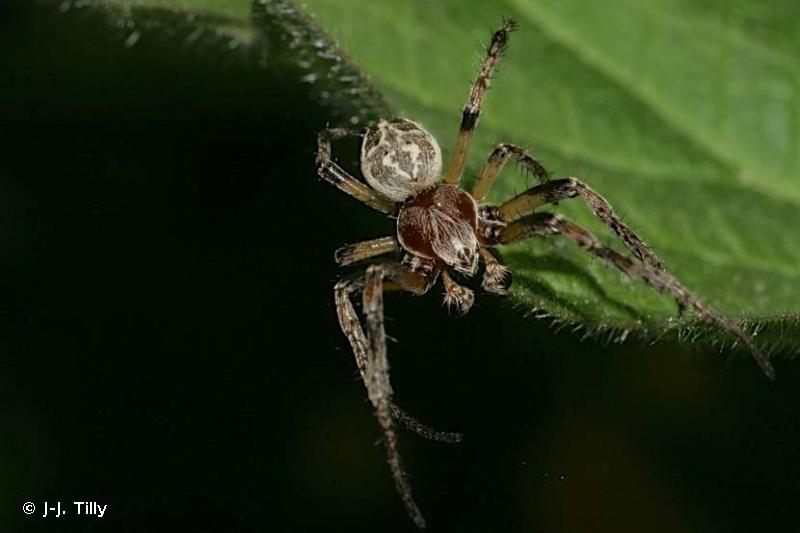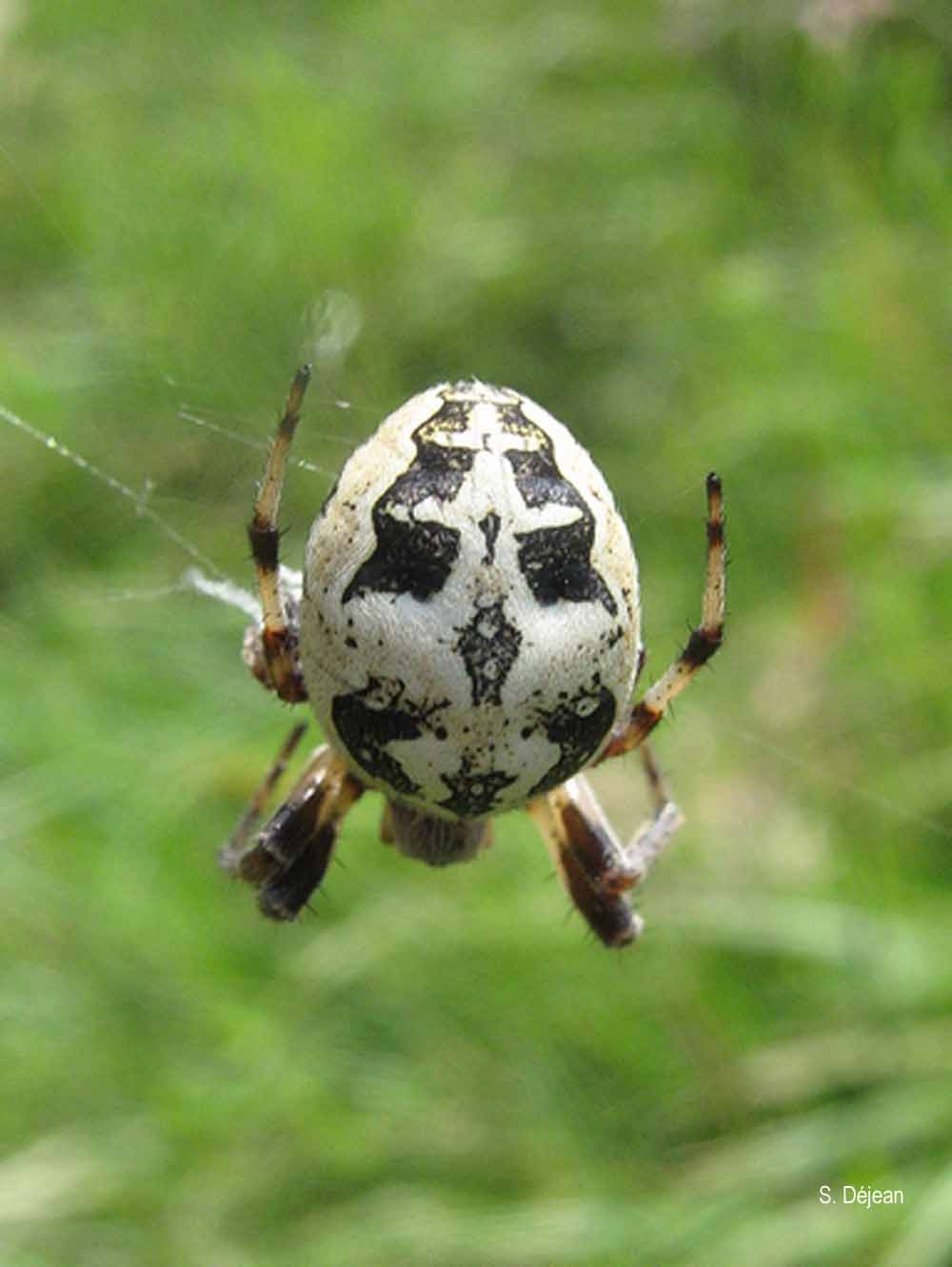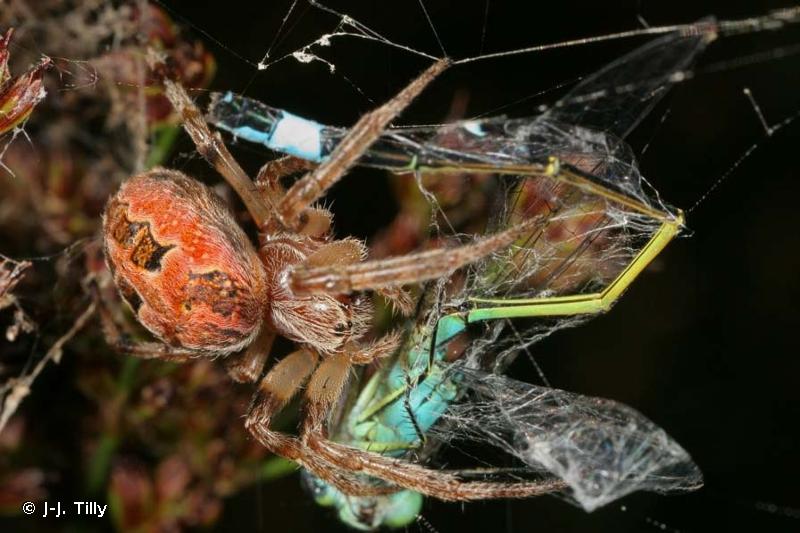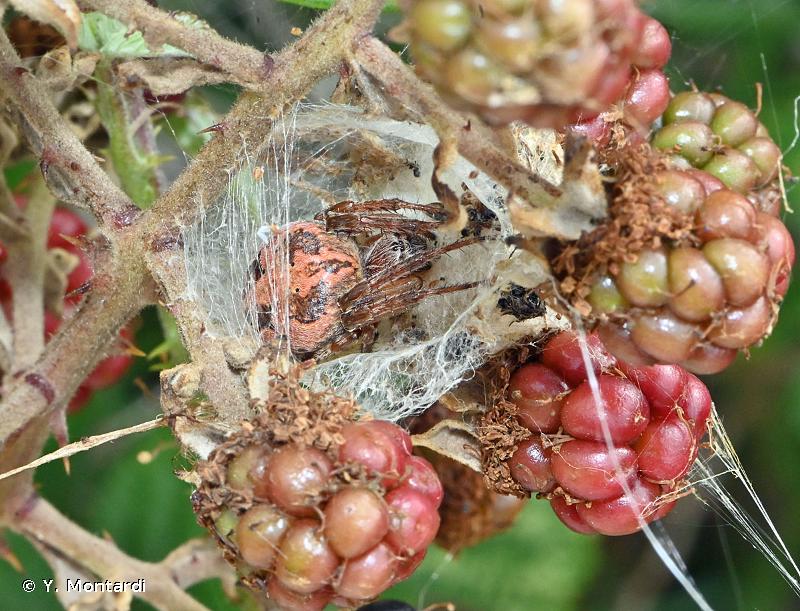
cd_nom

| Author : J-J. Tilly |
 |
To get the picture, please visit:
Jean-Jacques Tilly
Association française d'Arachnologie
http://asfra.fr/Site/Main_public.html
email : inpn@mnhn.fr
Legend: Mâle
Any reuse of one or more photographs on this site is subject to an authorization request from the author.
Link to the Code of Intellectual Property (Legifrance)

| Author : S. Déjean |
 |
To get the picture, please visit:
Sylvain Déjean
Biodiversité et gestion des territoires
Université de Rennes 1
SPN, Av du Gal leclerc
30042 Rennes Cedex
email: alain.canard@univ-rennes1.fr
Legend: montégut
Any reuse of one or more photographs on this site is subject to an authorization request from the author.
Link to the Code of Intellectual Property (Legifrance)

| Author : P. Le Mao |
 |
To get the picture, please visit:
Patrick Le Mao
Association française d'Arachnologie
http://asfra.fr/Site/Main_public.html
email : inpn@mnhn.fr
Any reuse of one or more photographs on this site is subject to an authorization request from the author.
Link to the Code of Intellectual Property (Legifrance)

| Author : J-J. Tilly |
 |
To get the picture, please visit:
Jean-Jacques Tilly
Association française d'Arachnologie
http://asfra.fr/Site/Main_public.html
email : inpn@mnhn.fr
Legend: Femelle
Any reuse of one or more photographs on this site is subject to an authorization request from the author.
Link to the Code of Intellectual Property (Legifrance)

| Author : J-J. Tilly |
 |
To get the picture, please visit:
Jean-Jacques Tilly
Association française d'Arachnologie
http://asfra.fr/Site/Main_public.html
email : inpn@mnhn.fr
Any reuse of one or more photographs on this site is subject to an authorization request from the author.
Link to the Code of Intellectual Property (Legifrance)

| Author : S. Maerten / INPN |
 |
To get the picture, please visit:
Sandrine Maerten
inpn@mnhn.fr
Despite the Creative Commons license, please inform the author of the use which will be made of his photo

| Author : Y. Montardi |
 |
To get the picture, please visit:
Despite the Creative Commons license, please inform the author of the use which will be made of his photo

| Author : S. Lecigne |
 |
To get the picture, please visit:
Sylvain Lecigne
inpn@mnhn.fr
Despite the Creative Commons license, please inform the author of the use which will be made of his photo

| Author : Y. Montardi |
 |
To get the picture, please visit:
Despite the Creative Commons license, please inform the author of the use which will be made of his photo
Distribution mondiale
toute l'Europe et le Bassin méditerranéen, Amérique du Nord
Caractères distinctifs, espèces
Taille - femelle : 8-15 mm, mâle : 6-9 mm.
La couleur générale est brune. Le dos de l'abdomen présente un schéma caractéristique du genre avec des dessins bruns foncés, l'un antérieur avec deux taches allongées blanches, l'autre postérieur, en triangle, constitué de bandes brunes interrompues au milieu. Il existe quatre espèces dans le genre Larinioides, elles ont toutes le même aspect général, l'Epeire cornue est la plus commune.
Milieux colonisés
L'espèce colonise des milieux bas jamais très éloignés d'une zone d'eau libre douce ou salée.
Chasse
L'Epeire cornue tisse une toile dans la végétation basse ainsi qu'une loge de soie épaisse, agglomérant souvent de la végétation. La loge, en forme de sac, avec une ouverture vers le bas, sert de retraite. La toile est renouvelée à heure fixe tous les soirs. Les proies sont principalement des insectes volants de groupes très variés. Les restes des victimes de grande taille sont collés sur les loges.
Développement, cycle
Le cycle est annuel, les adultes des deux sexes sont présents du printemps à l'automne. Devenu adulte, le mâle recherche une femelle subadulte et tisse une loge contre celle de sa future partenaire. Dès que la femelle mue pour devenir adulte, alors que son tégument n'est pas encore bien durci, le mâle la féconde puis part à la recherche d'une autre femelle. La période de ponte dure de mai à août, il y a souvent une seule ponte, parfois plusieurs, elles contiennent de plusieurs centaines à un millier d'œufs. Le cocon, recouvert d'une soie épaisse jaune, est pondu dans la loge. Il est ensuite séparé de la loge par une paroi de soie. Lorsqu'il y a plusieurs cocons, ils sont confinés dans des loges superposées. Les œufs se développent rapidement et libèrent de jeunes araignées qui se dispersent. Les jeunes solitaires et des femelles adultes passent l'hiver cachés dans la végétation.
A. Canard(Université de Rennes/Service du Patrimoine Naturel, MNHN),2014
Continental
Metropolitan France
Overseas
Marine
Metropolitan France
Overseas
The map presents a summary at the 10 x 10 km grid of the observation data for the species transmitted to the SINP. These data have been subjected to validation filters.
The map presents a reference distribution layer of the species at the scale of departments and marine sectors. The presence and absence data were established by expertise within a network of partners. This reference distribution is used in the validation process of the SINP data at the INPN level.
Corresponds to a report on the basis of at least one observation proved within a period of 10 years (20 years for little-known invertebrates) preceding the year and no presumption of extinction since obtaining the last data nor doubt on reproductive and implemented nature of this population. For migratory species, the presence indicated concerns areas of reproduction.
This status is based on one or more of the following criteria:
This point covers the absence, more difficult by nature to demonstrate than presence. This status is based on one or more of the following criteria:
This status must be assigned to a department in which the presence of the species is casual.
Particular case of absence due to a proven extinction less than a half century ago (older disappearances are treated as "no probable or definite").
In the state of knowledge, we can not comment on the presence or absence in the current department. This is the default status when not comprised in one of the previous categories or whenever there is doubt.
The map shows the global distribution of the species based on GBIF data (Global Biodiversity Information Facility).
